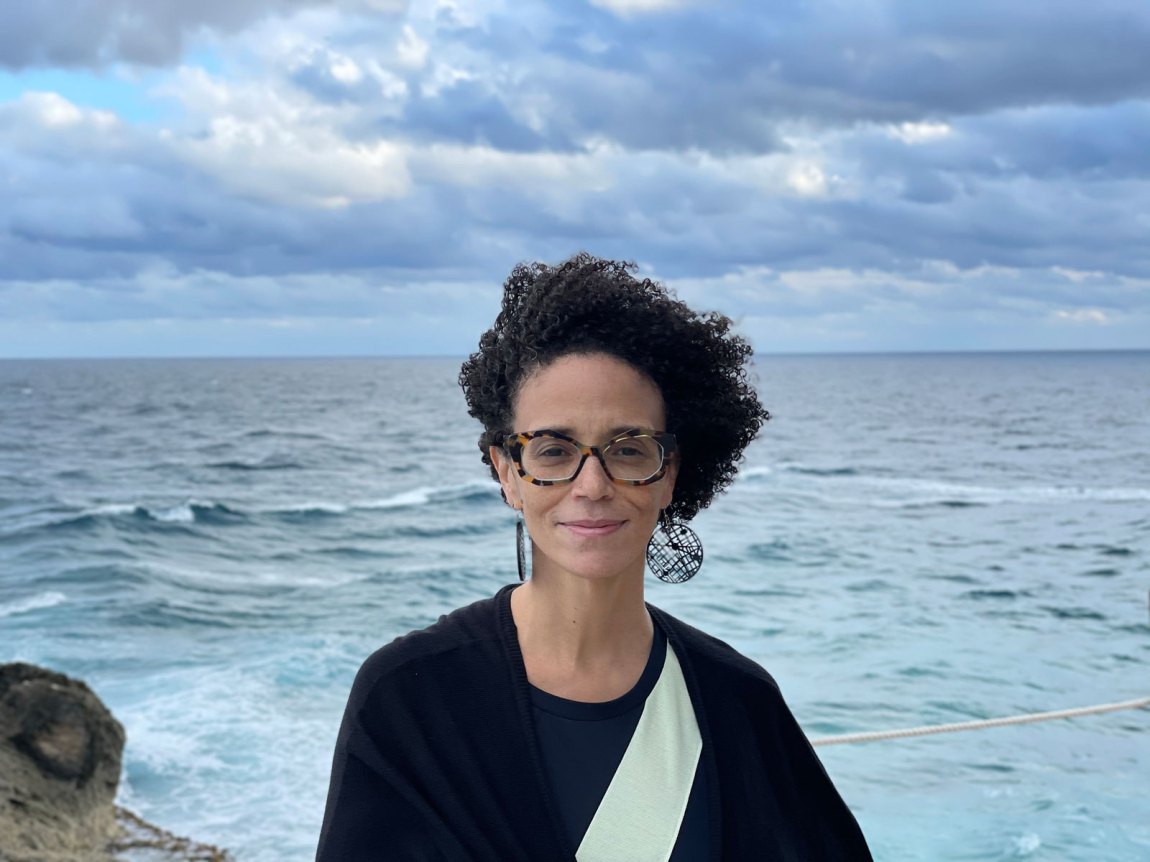In the February 25, 2021 issue of the magazine, we published “Deaccessioning Empire” by Coco Fusco, a review of two recent books—Clémentine Deliss’s The Metabolic Museum and Dan Hicks’s The Brutish Museums—on the movement to decolonize museums in Europe, and the question of what museums should do with objects and artifacts that were acquired as spoils of empire.
Fusco is an artist and writer who teaches classes on performance, social practice, and cultural theory at Cooper Union in New York City. I was curious how she got her start as an artist. As an undergraduate, she told me via e-mail this week, she studied film semiotics and literature, which was when she started to learn about “interdisciplinary avant-garde art practices.” After college, she worked as an assistant to the artist Leandro Katz, who had been one of her professors, and who made experimental films, photographs, and sculptures. He was also the first person to publish Kathy Acker (her book The Childlike Life of the Black Tarantula, through an underground press out of his loft in the 1970s). “Working for [Katz] gave me exposure to what it could be like to live and breathe as an artist who was not confined to a single discipline,” Fusco told me.
Fusco is best known for “Two Undiscovered Amerindians Visit the West,” a performance with Guillermo Gómez-Peña presented between 1992 and 1994. She and Gómez-Peña had conceived of the work as “satirical commentary on the so-called discovery of America that was being celebrated with great fanfare in the US in 1992.” They traveled around the world—public plazas in Europe, natural history museums in Sydney, Chicago, and Washington, art centers in Minneapolis and Buenos Aires, the 1993 Whitney Biennial—exhibiting themselves in a golden cage as “Amerindians from an island in the Gulf of Mexico that had never been discovered by the West.”
They had modeled the performance on nineteenth- and twentieth-century ethnographic displays, “human zoos,” as she calls them in her Review essay. “We thought when we began that the performance would be understood as a parody, but we soon discovered that some people actually believed that there was an undiscovered island and that we were from there,” Fusco told me. “There were others who knew we were not for real but enjoyed treating us as if we were.”
Fusco opens her piece with a discussion of a thousand human skulls from Germany’s former African colonies that had been found at a hospital in Berlin about a decade ago. She tried to schedule a visit to the museum where the skulls had been transferred for a project, but the curators told her that because they wanted to treat the remains “with the greatest sensitivity,” they weren’t willing to grant her access for artistic purposes. Instead, Fusco shifted her focus to a 1918 British military report about German war crimes against the Nama and Herero peoples in Namibia. What was unique about this report was that it included the testimonies of survivors of the Namibian genocide of 1904–1908.
“It is extremely rare to find ‘native’ voices in colonial texts,” Fusco told me. She created a performance piece by weaving those testimonies together with letters that had been written by one of the leaders of the Nama and Herero uprising against the Germans.
I asked Fusco for her thoughts on the state of performance art today. She told me that since museums have established departments over the last twenty years devoted to such work, which had previously been on the “fringe of the artworld,” the discipline has gained the financial support of “institutions that represent mainstream interests.” And that means that some performances and documents of those performances can be sold for huge amounts of money, a development that “shifts the focus of the field and public perception of the medium.” To Fusco, though, performance art has been “a medium that artists escape to in order to create with fewer restraints—visual artists, actors, poets, dancers have made performance their precarious home.”
In her essay, Fusco considers Deliss’s assessment that performance or interdisciplinary art are the best ways to approach questions of the decolonization of museums. Although Fusco is agnostic on this point, she notes that a number of artists have been attempting such a practice “long before other professionals treated this as an important concern.” She mentions that she’s indebted to the work of the British filmmaker John Akomfrah and the Black Audio Film Collective (now known as Smoking Dogs Films), who she says taught her to “look carefully at how imperial powers used artifacts, images, and monuments to shape a world view.”
Fusco sees general public opinion on the issue shifting toward repatriation. But the arguments over this policy are still in their early stages, and involve many different people and interests—museums, other institutions, the government, the law. She’s curious to see how museums in Europe and the US could work with institutions in the Global South to figure out how, together, they might “share in the creation of knowledge about cultural artifacts and enact processes that allow for cultures of origin to benefit from their contributions to the world.”
Advertisement
Fusco is still busy with her own creative work. Right now, she’s working on a video-essay in which she’s reflecting on the “symbolic impact of reckoning with so much death” that the pandemic has caused. She’s also making a “short film fiction” based on the testimony of Néstor Díaz de Villegas, a Cuban author who was sentenced to six years in prison because of a poem he wrote as a teenager. Fusco has been researching Cuban art and cultural politics since the 1980s, collaborating frequently with independent artists in Cuba. She told me that today, there’s “growing interest among young Cuban intellectuals and artists in exploring the history of dissent on the island, a history that has no presence in the official record, since the state bans the work of its critics.”



